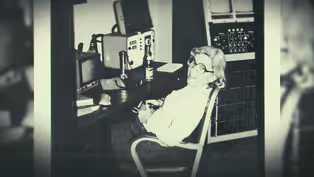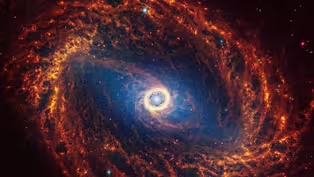
The Deepest Underground Lab in the U.S.
Clip: Season 51 Episode 8 | 1m 44sVideo has Closed Captions
A team of researchers hunt for dark matter deep underground in the Black Hills of South Dakota.
Invisible and mysterious, dark matter shapes the cosmos, but scientists are still trying to figure out what exactly it is.
Problems playing video? | Closed Captioning Feedback
Problems playing video? | Closed Captioning Feedback
National Corporate funding for NOVA is provided by Carlisle Companies and Viking Cruises. Major funding for NOVA is provided by the NOVA Science Trust, the Corporation for Public Broadcasting, and PBS viewers.

The Deepest Underground Lab in the U.S.
Clip: Season 51 Episode 8 | 1m 44sVideo has Closed Captions
Invisible and mysterious, dark matter shapes the cosmos, but scientists are still trying to figure out what exactly it is.
Problems playing video? | Closed Captioning Feedback
How to Watch NOVA
NOVA is available to stream on pbs.org and the free PBS App, available on iPhone, Apple TV, Android TV, Android smartphones, Amazon Fire TV, Amazon Fire Tablet, Roku, Samsung Smart TV, and Vizio.
Buy Now

NOVA Labs
NOVA Labs is a free digital platform that engages teens and lifelong learners in games and interactives that foster authentic scientific exploration. Participants take part in real-world investigations by visualizing, analyzing, and playing with the same data that scientists use.Providing Support for PBS.org
Learn Moreabout PBS online sponsorship- [Narrator] In the town of Lead, a retired gold mine houses the Sanford Underground Research Facility.
Chamkaur Ghag, a professor at University College London, is a founding member of a team of researchers drawn from universities around the world that's on the hunt for dark matter.
- To get down a mile, it takes a bit of time.
(dramatic music) This experiment up on the surface just wouldn't be able to run at all.
It's just far too sensitive.
- [Narrator] After the 10-minute ride down, it's on to a battery-powered locomotive, followed by a brief hike to get to the cavern that holds the lab of the LUX-ZEPLIN, or LZ Detector Experiment.
- The core of the experiment is xenon, it's liquid xenon.
It's xenon gas that's been condensed and we've gotta keep that clean and we've gotta keep it cold, and so much of what we'll see around here is all for that, really, - [Narrator] LZ isn't the only experiment using cooled xenon, but it now leads the pack in sensitivity.
- It's the front runner now and so we're entering discovery territory.
- [Narrator] Direct dark matter detection experiments go back to the 1980s.
Xenon-based experiments, similar in design to LZ, to the 2000s.
So far, all the experiments combined have detected nothing.
- We can see them crashing- - [Narrator] But the process constantly narrows down what dark matter could possibly be.
- Whenever we do see the S1 (indistinct).
(dramatic music)
How Vera Rubin broke barriers in astronomy
Video has Closed Captions
Clip: S51 Ep8 | 4m 4s | Vera Rubin's work provided convincing evidence for a mysterious substance, dark matter. (4m 4s)
Decoding the Universe: Cosmos Preview
Video has Closed Captions
Preview: S51 Ep8 | 30s | Explore big discoveries that have revolutionized our understanding of the universe. (30s)
Providing Support for PBS.org
Learn Moreabout PBS online sponsorship
- Science and Nature

Capturing the splendor of the natural world, from the African plains to the Antarctic ice.













Support for PBS provided by:
National Corporate funding for NOVA is provided by Carlisle Companies and Viking Cruises. Major funding for NOVA is provided by the NOVA Science Trust, the Corporation for Public Broadcasting, and PBS viewers.




